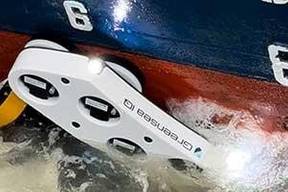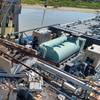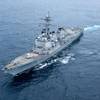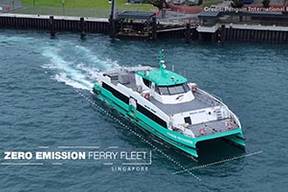U.S. Navy divers said on Wednesday that they are ready to search for bodies trapped inside the wreck of a Japanese fishing vessel when it was rammed by a U.S. nuclear submarine.
Before the divers can descend to the sunken vessel, the Navy must try to raise the Ehime Maru where it rests on the sea floor at (2,000 ft. (610 m) to 115 ft. (35 m). That could occur during the next 30 days.
Once moved, divers will enter the battered hull of the 830-ton ship and search for bodies.
The Ehime Maru, a 190-ft. (63 m) trawler used to teach Japanese high school students about the fisheries industry, was about nine miles south of Oahu on Feb. 9 when it was rammed by the USS Greeneville during an emergency surfacing drill.
The trawler sank within minutes of being rammed.
The collision strained relations between the U.S. and Japan, particularly after it was disclosed that the surfacing drill was conducted in large part for the benefit of civilian VIPs on board the Greeneville.
Nine people from the Ehime Maru were killed in the collision and their remains may be inside the hull.
The divers, part of a 66-member contingent that will work seven days a week on recovery, have been training daily at their pier-side headquarters near the mouth of Pearl Harbor, said Cmdr. Rob Fink, commanding officer of Mobile Diving Salvage Unit 1.
"Our mission is to recover nine missing crew members and we will look stem to stern, top to bottom," Fink said.
The Navy intends to raise the Ehime Maru to about 100 ft. (31 m) using cables suspended from a salvage ship, Rockwater 2, to create a giant sling, and tow it while still submerged and set it down in shallower waters of 115 ft. (35 m). The move, which will take about three days, should be completed by mid-September.
Engineers aboard Rockwater 2 intend to blast water through coiled tubing to clear a space beneath the Ehime Maru so that flexible lifting plates can be placed beneath the ship.
Once the vessel is moved, the divers will search at least nine locations in the Ehime Maru where crew members were last seen, but the Navy officials have said they do not expect to find more than seven bodies.
Although lifting a ship from such extreme depths has never been done before, sending Navy divers into wrecks at 115 ft. (35 m) is practically routine, said Chief Warrant Officer 3 George Primavera, the senior diver overseeing the mission.
Divers will wear one-piece "dry suits" with hard yellow helmets that are connected to a surface air supply, Primavera said. Their umbilical to the surface also allows them to communicate with supervisors and send back live video from helmet-mounted cameras, Primavera said.
Divers are prepared to cut or pry their way through obstacles as they negotiate the narrow passageways of the Ehime Maru, he said. But they will not be put in overly hazardous situations, he said.
There are risks, however, even in routine procedures.
Divers will only have 90 minutes from the time they enter the water until the time they must begin a careful ascent to the surface. Returning from 115 ft. (35 m) creates a danger that nitrogen in the bloodstream could expand, leading to the bends and other problems, he said.
Sponsored Content
EverClean - the always clean anti-fouling solution

Subscribe for
Maritime Reporter E-News
Maritime Reporter E-News is the maritime industry's largest circulation and most authoritative ENews Service, delivered to your Email five times per week












